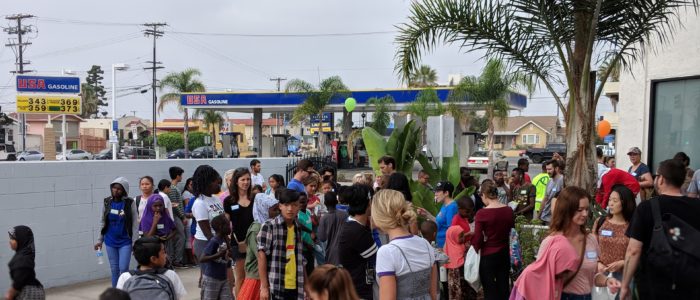
For the second straight year, a San Bernardino County study revealed a growing homeless population in the region, but thanks to new data-collecting technology and methodologies, officials believe they now have the most accurate figures to date.
According to the 2019 Point-In-Time Count – the annual January survey of homeless persons – 2,607 individuals were without a permanent home on Jan. 24, a 23% increase from the 2,118 homeless persons counted here in January 2018.
Released Wednesday, April 24, the 150-page report from the San Bernardino County Homeless Partnership says changes made to this year’s surveying process contributed, in part, to the year-over-year uptick.
On top of having about 200 more volunteers, surveyors for the first time used a digital app to enter information gathered in the field, allowing officials to analyze real-time data and volunteers to canvass more areas, quicker. Additionally, the San Bernardino County Sheriff’s Homeless Outreach Proactive Enforcement, or HOPE, team provided volunteers information on existing homeless encampments and hot spots ahead of time, creating targeted maps.
The Point-In-Time Count “is the one time in the year the whole community rallies around the issue of homelessness,” said Philip Mangano, the former homelessness czar under Presidents George W. Bush and Barack Obama, who now works with the county on creating strategies to reduce the epidemic.
“With all the changes in methodology we implemented this year, the safest thing to say is that in San Bernardino County, we found more homeless people,” Mangano continued. “But whether they were homeless last year and weren’t counted or the year before and weren’t counted, we don’t know that answer. My guess is that 23% is very impacted by the changes in methodology.”
Kent Paxton, homeless policy adviser for Supervisor Josie Gonzales’ Fifth District, attributed that increase to the rising cost of housing, particularly for people on a fixed income. According to the U.S. Department of Housing and Urban Development, fair market rent in the Riverside-San Bernardino-Ontario metropolitan area is $926 a month for a one-bedroom unit and $1,156 a month for a two-bedroom unit.
“There’s no surprise with the increase in the numbers,” Don Smith, with Creating Community Solutions, an independent consulting firm, said Wednesday at a meeting of the county’s Interagency Council on Homelessness.
The reality, he noted, is the lack of affordable housing is a regional crisis, one that will not improve by focusing solely on the homeless population.
“We have to shift the narrative to housing,” Smith added. “We need to make housing affordable to low-income folks.”
The Point-In-Time Count breaks the homeless population into two categories: sheltered and unsheltered.
Of the 2,607 homeless people counted Jan. 24, 1,920, or 73%, were unsheltered, or had slept the night before in a private or public place not designed for or used as a regular sleeping accommodation, a 33% increase from 2018.
Another key finding revealed that about 19% of the 1,873 adults counted became homeless for the first time in the past year. Also of note, nearly a quarter of adults living on the streets in the county, about 450, are unaccompanied women.

